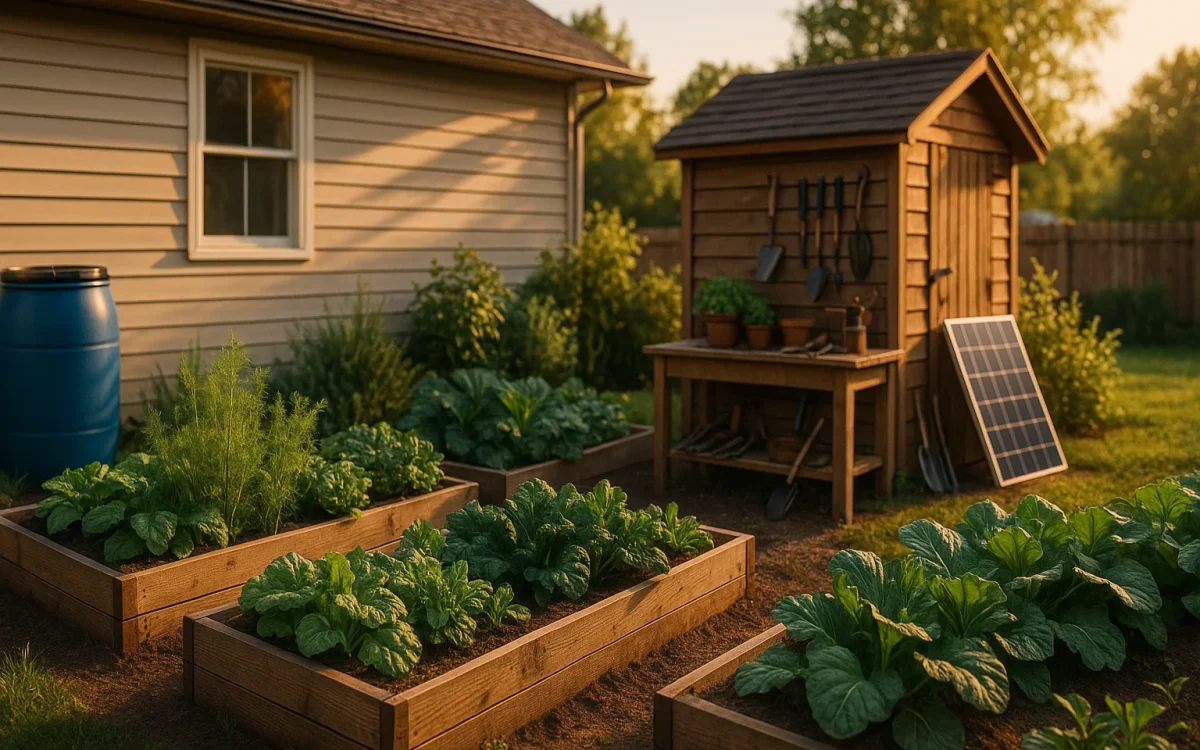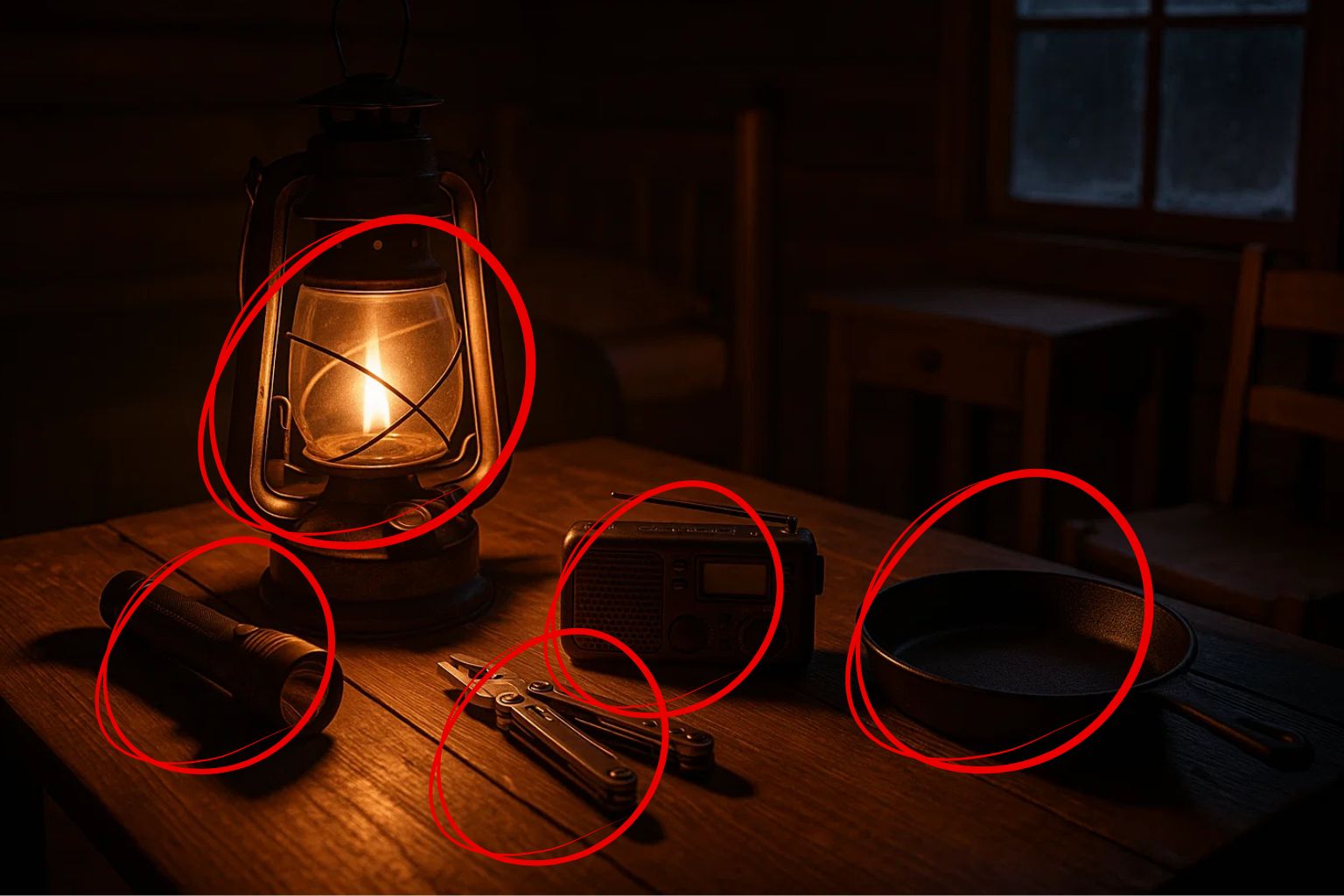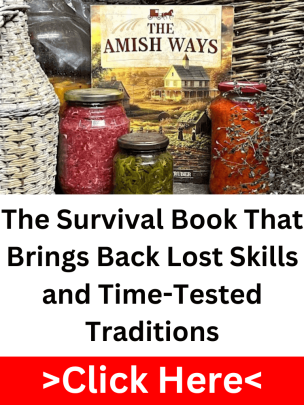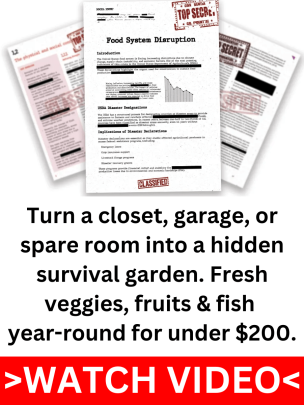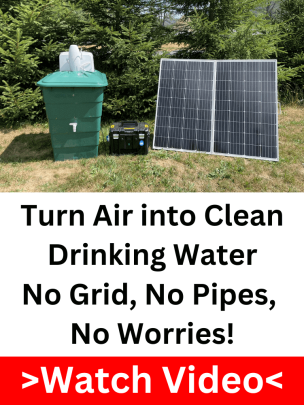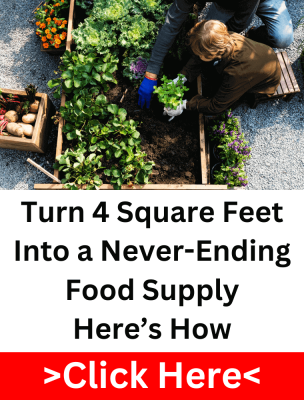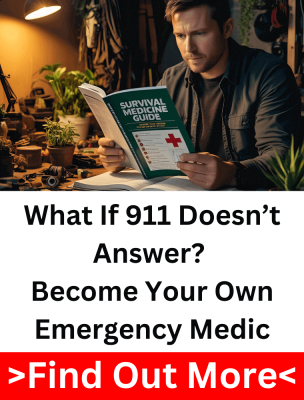The cracks in our modern systems are showing. Empty shelves, rising prices, unreliable power grids, it’s all proof that convenience has made us fragile. Most people sense it, but few do anything until it’s too late.
The good news? You don’t need 20 acres or a log cabin to live free from fragile systems. You can become self-sufficient at home, right where you are, in a small-town house, a suburban neighborhood, or even an apartment with a sunny balcony.
Real self-sufficiency without moving off-grid isn’t about cutting ties with society; it’s about taking control of what really matters, your food, water, energy, and health. Each small change builds independence, one layer at a time.
The steps ahead aren’t expensive or extreme. They’re the same practical habits our grandparents used to weather hard times, revived for today’s world.
By following these 10 simple, proven steps, you’ll be ready to handle blackouts, shortages, and whatever tomorrow brings, without fear or panic.
Step 1: Grow Food Wherever You Are (Container, Raised Bed, or Balcony)
Most people still believe the myth that growing food requires acres of soil and a red barn in the distance. The truth is, you can grow more than you think, even if your entire “farm” fits on a patio or a patch of sunlit concrete.
Start small. Four to six containers of lettuce, peppers, or herbs can shave dollars off every grocery run and teach you the timing, watering, and soil habits that make a real grower. A few deep pots lined along a south-facing wall can keep you in fresh greens most of the year. If you’ve got no yard, go vertical, stack planters or hang baskets to turn walls and railings into living food shelves.
Got a bit more space? Build a raised bed beside the house and mix vegetables with flowers, no one will even notice you’re running a stealth garden. Dwarf fruit trees like figs, peaches, or lemons thrive in tubs, and they move easily when the seasons shift.
Did You Know?
One square meter of intensive container gardening can yield over 20 pounds of produce a season, enough to keep a family in salads and stir-fries for weeks.
If you want to see how far a small backyard or balcony can go, Pocket Farm shows exactly how to build a compact, indoor-outdoor food source that runs almost on autopilot, no farmland, no tractor, just smart systems that work anywhere.
Step 2: Build a Working 90-Day Pantry
If supply chains froze tomorrow, most households would run out of food in less than a week. Building a reliable 90-day pantry isn’t paranoia, it’s plain common sense. And you don’t need to fill a bunker to do it. You just need a system that keeps food moving, fresh, and ready when you need it.
Follow the golden rule of every home food storage plan: store what you eat, and eat what you store. Rotation is everything. Keep your shelves stocked with everyday foods you already cook, beans, rice, oats, peanut butter, canned meat, and honey. Buy extras when they’re on sale, mark dates clearly, and always pull from the oldest stock first.
Here’s a simple place to start:
Your Starter 10 Items for a Reliable 90-Day Pantry
- White rice (20–30 lbs)
- Dried beans or lentils
- Oats or oatmeal
- Peanut butter or nut butter
- Canned meat (chicken, tuna, beef)
- Canned vegetables and fruit
- Pasta and tomato sauce
- Flour and baking essentials
- Salt, sugar, and cooking oil
- Honey, nature’s eternal sweetener
As this habit grows, so does your peace of mind. Every jar and can you add is one less thing to worry about when stores go dark or prices spike.
Step 3: Secure Your Water Supply Before You Need It
You can last weeks without food, but only days without water. When taps run dry or pipes freeze, panic sets in fast. The CDC recommends storing at least one gallon of water per person per day, but that’s just the survival minimum. Double it if you live in a hot climate, have kids, or expect to handle cooking and sanitation.
Start simple: fill and rotate bottled water, then expand with stackable jugs or 5-gallon containers tucked under beds or in closets. If you have outdoor space, add a rain barrel or two, it’s the easiest passive source you’ll ever build. In most states, rainwater collection is legal, but check your local rules before setting up. For short-term emergencies, a bathtub liner can hold over 60 gallons in minutes, one quick move before the outage hits.
Storage alone isn’t enough. You need purification backups too: a gravity-fed filter for daily use, purification tablets for travel, and the oldest trick in the book, boiling. Redundancy is security. The more ways you can make water safe, the less power a crisis has over you.
Step 4: Preserve the Surplus — Safely
When your garden starts producing more than you can eat, preservation becomes power. Every jar you seal is a little victory against inflation, waste, and dependency. It’s also one of the oldest prepping skills there is, and it still works better than any modern gadget.
Start with simple methods. Dehydration removes moisture and locks in flavor, fruits, vegetables, jerky, even herbs keep for months in airtight jars. Pickling is another time-tested trick; vinegar and salt not only add taste but also extend shelf life dramatically. When you’re ready to level up, learn canning, the gold standard of long-term storage. Just remember: low-acid foods like meat, beans, and most vegetables must be pressure canned, not water-bathed, to prevent botulism.
If you want to skip years of trial and error, The Lost Superfoods shows exactly how our ancestors preserved food for decades without electricity, with recipes and methods that still work today. It’s one of those guides that belongs on every prepper’s shelf.
Safety Reminder:
Always follow tested preservation guidelines from the USDA or the National Center for Home Food Preservation (NCHFP). Canning times and pressures aren’t suggestions, they’re science that keeps your family safe.
Preserving food isn’t just about storage, it’s about confidence. Knowing your shelves are lined with meals you made yourself is one of the purest forms of self-sufficiency.
Step 5: Keep Food Cool When the Grid Fails
When the power went out last summer, my neighbor lost everything in his fridge within two days. The smell alone was enough to make him swear off frozen foods forever. The truth is, electricity is the weakest link in modern food storage, and if you depend entirely on it, you’re one outage away from losing your hard-earned supplies.
That’s where old-world ingenuity comes in. Long before refrigeration, people kept their food cool using earth and airflow. A root cellar is still the best option if you can build one, but there are plenty of alternatives that work just as well on a smaller scale. A shaded basement corner can hold 50–60°F year-round. A buried cooler or barrel keeps produce crisp and milk safe for days. Even a simple zeer pot, two clay pots with wet sand between them, can drop temperatures by 20°F through evaporation alone.
If you want to take this further, check out our full guide on how to build a hidden root cellar under a modern garage floor, a stealth, secure way to keep your food fresh long after the grid goes dark.
The key is redundancy: if one system fails, another stands ready. Cooling your food without power isn’t just clever, it’s a survival advantage that keeps you eating when others are scrambling.
Step 6: Backup Power Without Going Off-Grid
The average U.S. home loses power between one and five times a year, but it only takes one long outage to remind you how dependent we are on electricity. Refrigerators thaw, basements flood, and the quiet comfort of modern life fades fast. A smart home backup power plan isn’t about luxury; it’s about staying safe, lit, and connected when the grid gives out.
Start by knowing your options. Inverter generators are efficient and quiet, perfect for running essentials like a fridge, freezer, or medical equipment. Traditional generators handle heavier loads but burn more fuel and make more noise. Battery backup stations are silent, clean, and ideal for short outages or apartment dwellers. Pair one with a small solar panel setup, and you’ve got renewable power that keeps your lights on indefinitely.
Fuel management matters. Gasoline goes bad in months; propane and diesel last much longer if stored safely. Always rotate fuel and keep stabilizer on hand. Test your setup regularly, the middle of a storm isn’t the time to learn that your generator won’t start.
Safety Box — Generator Safety 101
• Run all generators outdoors, at least 20 feet from doors and windows.
• Never use one in a garage or basement, even with the door open.
• Always install carbon monoxide detectors inside your home.
• Keep cords dry and rated for outdoor use.
When planning off-grid power at home, think in priorities: keep your fridge, a few lights, and your phone powered first. Everything else can wait. A small system that works beats a big one that fails.
Reliable backup power turns a blackout into a minor inconvenience instead of a crisis, and that’s what self-reliance is all about.
Step 7: Learn Natural Remedies and Basic First Aid
Food and power matter, but when medicine runs short, everything stops. Pharmacies can be emptied in hours, we saw it during lockdowns and hurricanes alike. That’s why every self-reliant home needs more than just supplies. It needs knowledge, the kind that doesn’t expire, break, or depend on a delivery truck.
Start by learning the basics of natural medicine and first aid. You don’t have to become an herbalist overnight, just master a few simple, proven remedies. A healing salve for burns and scrapes. A tincture for pain or sleep. A tea to ease coughs or calm nerves. Once you’ve made your first jar or bottle, you’ll never look at your backyard or kitchen garden the same way again.
Some of the best starter plants are easy to grow and store:
- Garlic – nature’s antibiotic.
- Comfrey – speeds healing for cuts and bruises.
- Calendula – soothes burns and skin irritation.
- Yarrow – stops bleeding and aids recovery.
If you want a trusted guide, The Forgotten Home Apothecary by Dr. Nicole Apelian walks you through 250+ herbal cures, drawn from her real-world experience surviving 57 days on the TV show Alone. It’s a field-tested manual every prepper should have before the next shortage hits.
Step 8: Cut Your Dependencies (Energy, Water, Waste)
Every bill you pay is a reminder of how tied we are to fragile systems, power companies, water utilities, waste pickup. The less you rely on them, the stronger and freer you become. To reduce home dependency, start with small fixes that stack big results over time.
Seal window and door drafts, insulate your attic, and switch every bulb to LED. These changes cost little but stretch your backup power and cut your utility use year-round. If you can, install a few solar lights outside or a small panel kit for emergency charging, it’s a step toward quiet, steady independence.
Think beyond energy, too. Reuse greywater from laundry or dishes to water plants. Line-dry clothes instead of running the machine. Keep manual tools for grinding, mixing, and cutting, no electricity needed. Off-season prep like collecting rainwater, composting kitchen scraps, or fixing leaks now can save hundreds later.
That’s energy efficiency prepping in action, less waste, lower costs, and one less thing to depend on when the grid or supply chain falters.
Step 9: Trade Skills, Not Just Stuff
When times get tough, it’s not the one with the biggest stockpile who thrives, it’s the one with the strongest network. Barter isn’t just trading goods; it’s building trust, resilience, and reputation. The right barter networks become safety nets long before any crisis hits.
Start small and local. Swap a dozen homegrown eggs for a neighbor’s fresh honey. Fix someone’s fence and trade for vegetables from their garden. Every small exchange builds a layer of connection, and those layers can mean everything when the shelves go empty.
Here are some High-Value Barter Skills that always hold worth:
- Fixing – tools, gear, engines, and home repairs.
- Growing – produce, herbs, and food preservation.
- Healing – herbal remedies, first aid, basic care.
- Teaching – practical know-how others can learn from.
Communities that already trade and share before a collapse are the ones that endure after it. That’s exactly how the Amish have survived for centuries, relying on cooperation, craftsmanship, and faith instead of fragile systems. The Amish Ways dives deep into those principles of community self-reliance and barter, showing how old-world habits can rebuild stability in modern times.
Step 10: Create Your 12-Week Self-Reliance Roadmap
In just twelve weeks, you can move from dependent to prepared, not by overhauling your life, but by stacking small, steady wins. Self-reliance isn’t built overnight; it’s built by momentum. Each week, you’ll see one part of your life shift from “I hope this works” to “I’ve got this covered.”
Start simple:
- Week 1: Stock your 90-day pantry.
- Week 2: Store and purify water.
- Week 3: Grow something edible.
- Week 4: Learn a preservation skill.
- Week 5: Test your power backup.
- Week 6: Build your first aid and herbal kit.
- Week 7: Cut energy waste.
- Week 8: Practice a barter or repair skill.
- Week 9: Strengthen community ties.
- Weeks 10–12: Refine, rotate, and reinforce everything you’ve built.
Keep the pace realistic, and celebrate progress, every step brings more confidence and less fear.
Self-sufficiency isn’t about isolation, it’s about freedom, control, and peace of mind. Whether you’re planting tomatoes on a balcony or wiring a backup power line, you’re reclaiming control over your future.
When you’re ready to go deeper, explore proven systems that make independence easier, like The Amish Ways for community-based living or the Pocket Farm System for year-round food security. Start small, stay steady, and you’ll be surprised how fast “someday” turns into ready.

